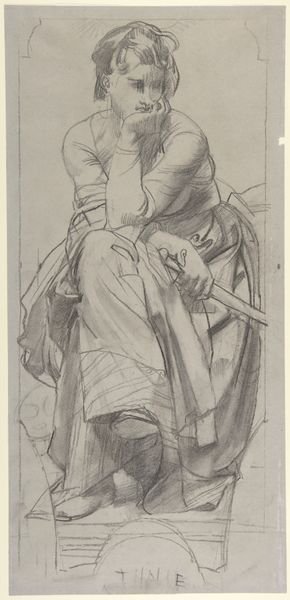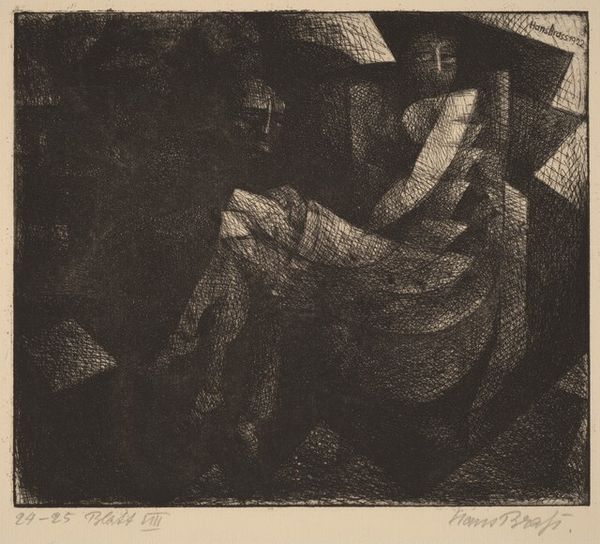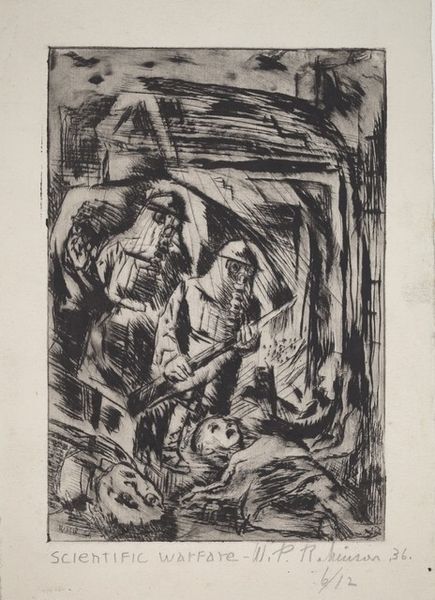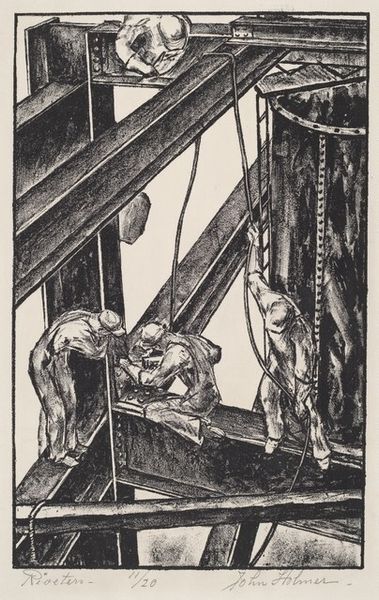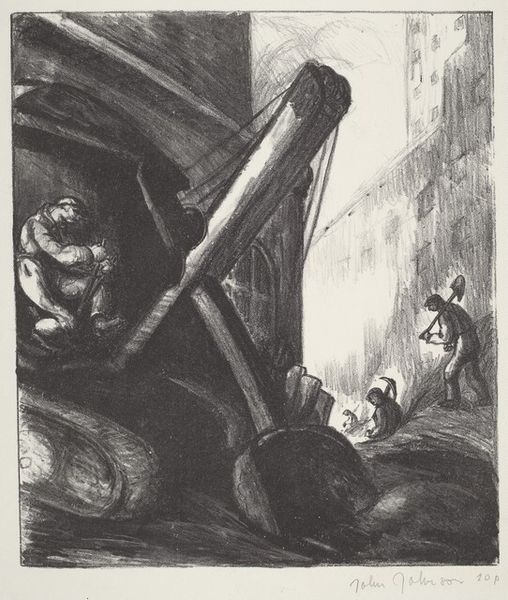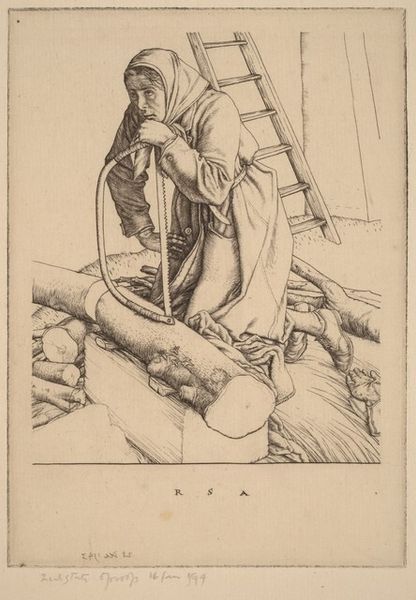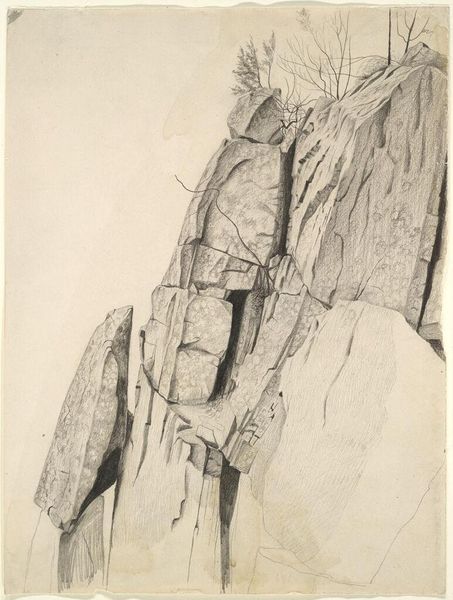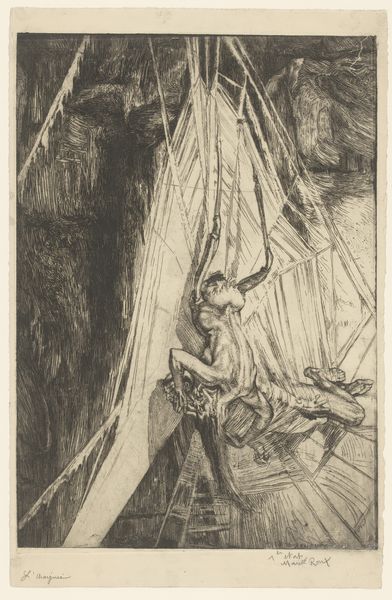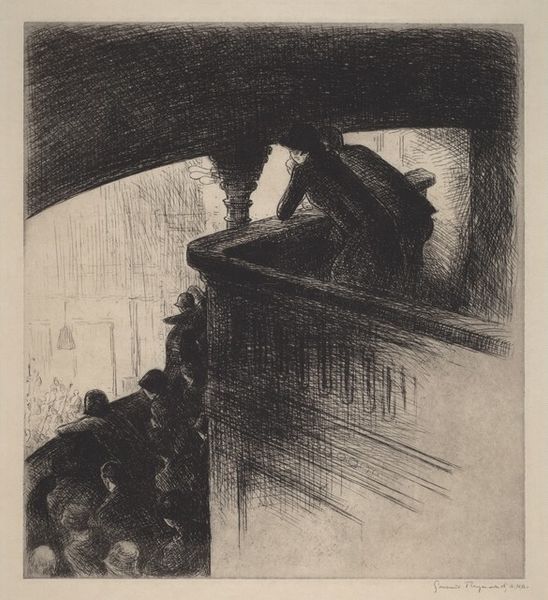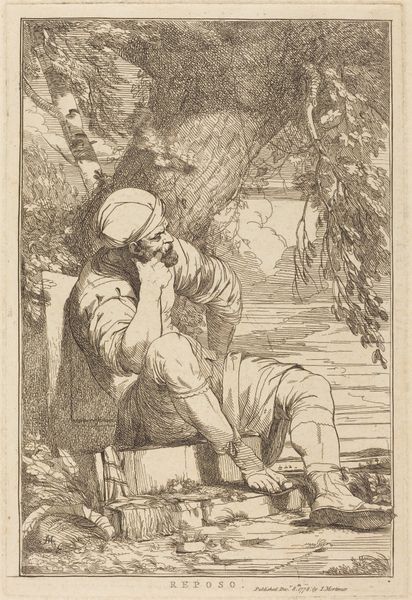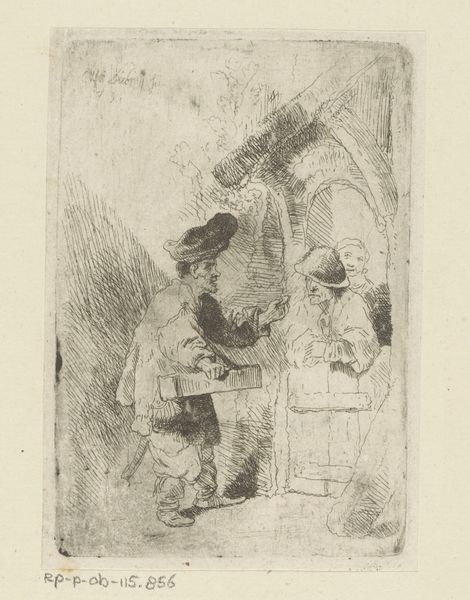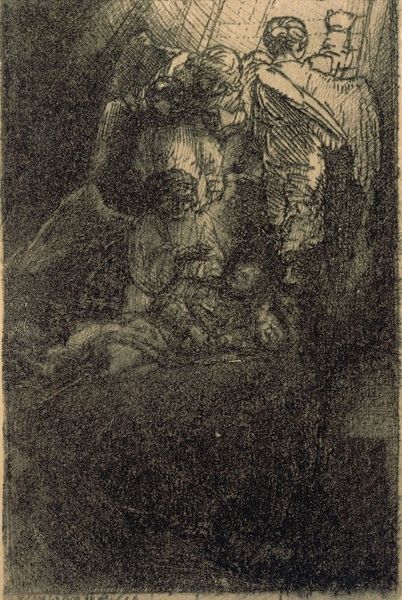
print, etching
# print
#
etching
#
landscape
#
geometric
#
cityscape
#
genre-painting
#
realism
Dimensions: plate: 31.75 × 22.86 cm (12 1/2 × 9 in.)
Copyright: National Gallery of Art: CC0 1.0
Editor: This is James E. Allen's "Up Above the World," an etching from 1936. It depicts two construction workers high on a steel beam, with the city stretching out below them. I'm immediately struck by how it captures the daring and, frankly, the precariousness of building these enormous structures. What symbols or stories do you think Allen is trying to convey here? Curator: Allen's choice of imagery carries significant weight. The steel beam itself is a powerful symbol – a literal and figurative backbone of urban development. But it's more than just progress; it's a visual representation of human aspiration, of reaching for the sky, yet precariously balanced against an unseen, immense void. Look at how small the buildings look below and yet so very very dense. Editor: I see what you mean about aspiration, especially considering the era. The Great Depression was in full swing, but these skyscrapers represented hope for the future, didn't they? Curator: Exactly! And notice how Allen uses the figures of the workers. They're almost anonymous, their faces obscured, representing a collective effort. This connects them to an archetype of the "builder", echoing motifs of earlier master craftsmen—but now industrialized, literally up in the sky rather than the earth. The composition's steep, upward thrust can evoke the awe and fear, connecting to cultural ideas about transcendence and mortal hubris, maybe even of the Tower of Babel. Does this reading surprise you? Editor: It does! I was focusing on the real-world aspect of it, the depiction of construction, rather than any symbolic level. Curator: Consider, then, how such seemingly simple imagery becomes charged with these layers of meaning, reflecting our complicated relationship with progress, risk, and the urban environment. Editor: Seeing these figures as symbolic definitely elevates the whole piece beyond just a snapshot of construction work. Curator: Indeed. Allen provides a meditation on modernity’s ambition and inherent precarity, encoded into deceptively straightforward lines and tones. Editor: I’ll never look at a cityscape the same way! Thanks for that.
Comments
No comments
Be the first to comment and join the conversation on the ultimate creative platform.
